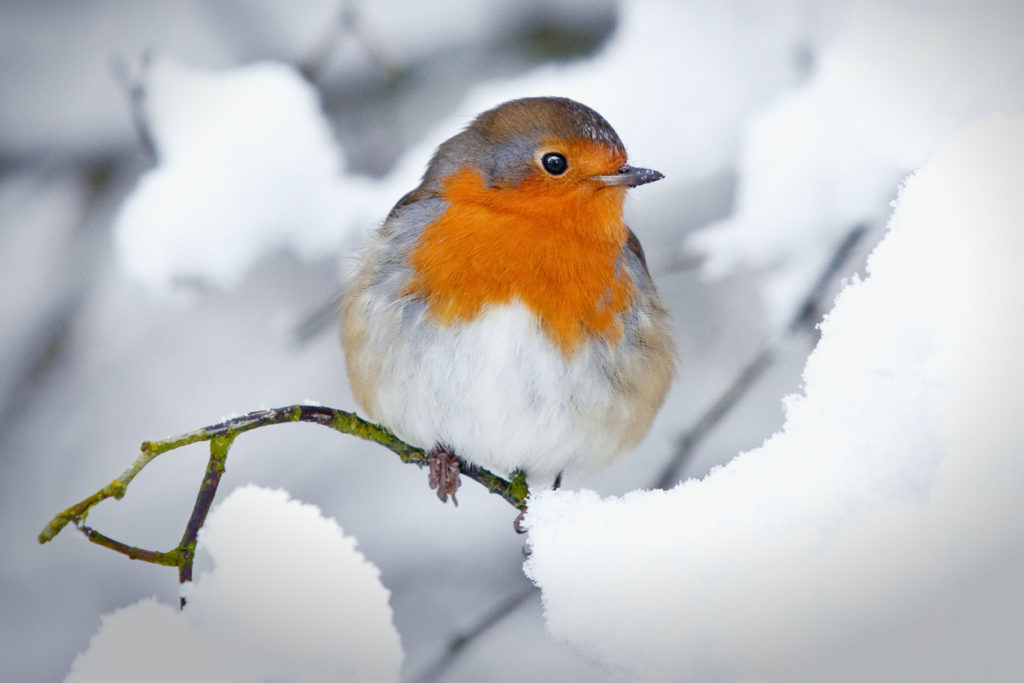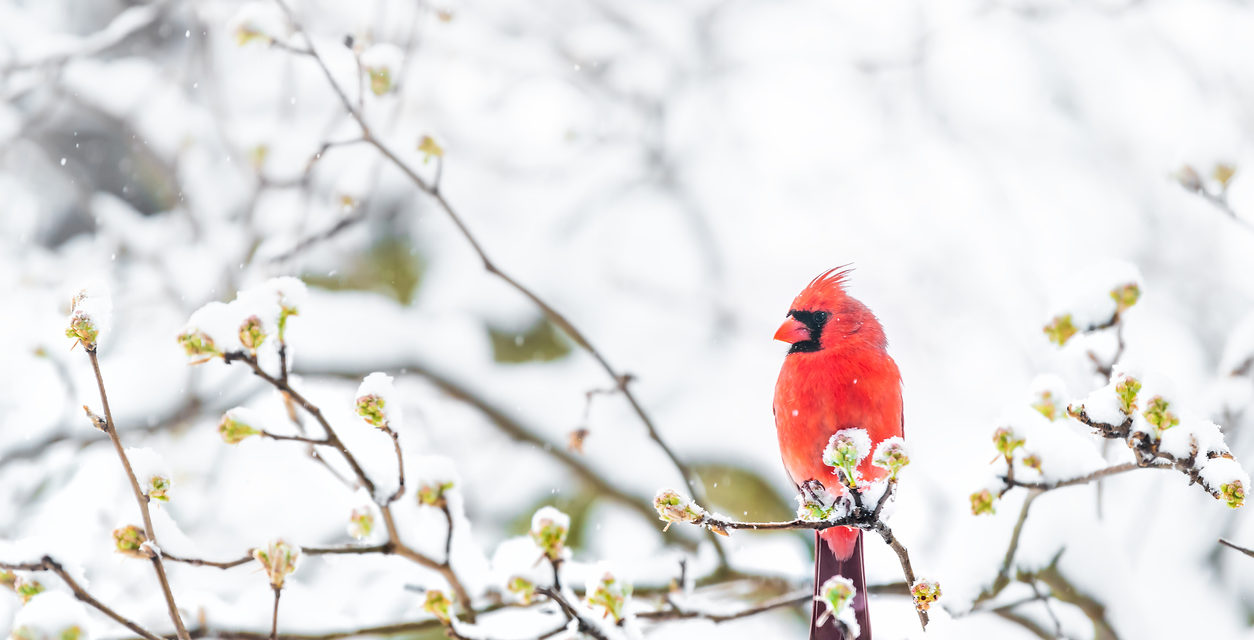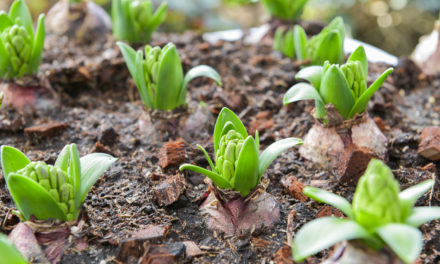I was desperate.
Which is how I found myself in my backyard at 7:30 a.m. several days this past week, in my bathrobe, hair in hot rollers, clutching a jar of peanut butter and a butter knife.
I happened to spy the old jar in the cabinet and thought, “Hey, birds like nuts. Therefore, they must like peanut butter.” I’m wise like that first thing in the morning.
So out I went to slather whatever I could find with the crunchy, fatty goop. It went in-between tree branches and all over the green thingies that hold cakes of suet. Some of it was gone later that evening, but I’m reluctant to say whether the birds or the chubby squirrels got to it first.

Photo Credit: Losicar (iStock).
This is winter in my backyard. All squirrels, no birds. Well, a few birds. Those adorable dark-eyed juncos found me this year. I don’t remember seeing them before. The ground feeders hop along, ferreting out millet, even furiously digging little holes in the snow to find their next meal. Apparently, our region is their southernmost stop in the cold months, and they’ll be with us until spring, said Ronald Perry, owner of This Place is for the Birds, a delightfully eclectic shop for bird, dog, Christmas tree, antiques, yard art and more.
But my other visitors are few and sometimes far between. I’ve seen random mourning doves, who appeared to be on a double date, a couple of chickadees, some finches, a downy woodpecker every now and again, a lone towhee who dropped by for a drink, and two blue jays, who squawked and flew off with whole peanuts clutched in their beaks. Somehow, they seem to know to only show up on Sunday mornings. How do they do that?
“In the fall, they stash it more than they eat it,” said Perry, who remembers replacing a roof once, only to find a peanut under every shingle. “In late August, September, October, our peanut sales go up.”
I sought out Perry for reassurance that the birds have indeed flown the coop for winter, and I hadn’t somehow driven them off. I also wanted advice on how to better attract the ones who are still here and support them during the cold months, when food and water are harder to come by.

Photo Credit: Marco Verch (Flickr).
Apparently, many of your favorite birds are still around, including nuthatches, woodpeckers and chickadees, but definitely in lower numbers. The most important thing to do is maintain a food supply, as birds carry no fat and can’t last long without food and water, because it’s super dry here.
“It’s amazing how they survive,” Perry said. “It’s a mystery.”
You can keep putting out the same food you did in the summer, but include plenty of high-fat varieties, such as peanuts and sunflower chips, the latter of which all birds will eat. It keeps their body temperature up.
“It’s the seed that has the most nutrients, fiber and fat content,” said Perry. “They’ll automatically go to the one that benefits them the most.”
And even if they turn up their noses at suet at other times of the year, almost any bird will eat it come winter, as long as it has a nut base. And oh yes, they like peanut butter.
If you’re truly invested in your bird watching, it’s time to ante up for a heated bird bath, or a device you can put in the bath that keeps the water from freezing. You’ll need an electrical outlet, of course, but those little flying dinosaurs will be ever so grateful. Perry has yet to find a solar-powered bath that works.
Remember that the ideal amount of water is about an inch and a quarter to an inch and a half, and it’s good to place a rock where the water is deeper, so birds can gauge the depth.
I don’t know about you, but I’m a world-class projector, meaning I project my human wants and needs onto the animal kingdom. If it’s freezing out, I think the birds must be miserable and need a little blankie or mini sweater vests and earmuffs. But Perry says it’s better to leave well enough alone. He reminded me how they’ll perch on a branch and puff up their little bodies to stay warm. I recalled some extraordinarily round and puffy-looking birds squatting for long periods on a feeder and knew what he meant.
“They’re better off being out there,” he said, “and when the weather changes, their fur grows.”
OK, I get it. But I still feel for them, and they won’t build nests until spring or take refuge in old nests, including the scores I know are in the eaves and attic of my house. You can try a roosting box, but Perry hasn’t heard of people having a ton of luck luring birds inside. It resembles a bird house but has a hole at the bottom, with perches inside for smaller birds to huddle next to each other for body heat.
Sand beds are another way to attract birds, said his daughter, Sarah Perry. They love dirt baths, which I noticed this summer when they rolled onto their backs and wiggled around in the dirt in my backyard, much as a dog does in the grass. Apparently, the sand or dirt helps remove oil on their wings.

 Photo Credit: ablokhin (iStock).
Photo Credit: ablokhin (iStock). 



Comment on: Don’t Let Winter Stop You From Bird Watching